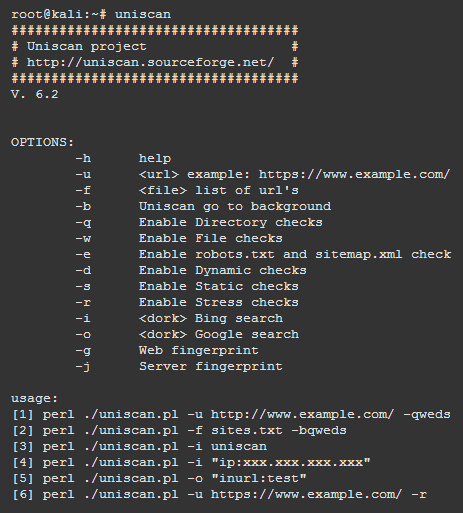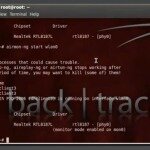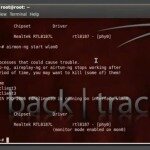It scan websites and web applications for various security issues like SQLi, RFI, LFI, XSS etc.For this tutorial, we are going to use Kali Linux because Uniscan is preinstalled and it saves us a lot of hassle. If you don’t have kali linux installed or cannot figure out how to install it, I would recommend taking a look at my previous post – How To Install Kali Linux.Running and using Uniscan is quite simple, just open up a Terminal Window and type ‘uniscan‘ and the list of options and examples will be listed.
Check Out : Easy Ways To Prevent DDOS Attacks
Scanning :-
In the image above under the Usage heading examples are given on using Uniscan, try the first option.
The above example scans a single url for basic information.
Fingerprinting :-
With the option ‘j’ uniscan would fingerprint the server of the url. Server fingerprinting simply runs commands like ping, traceroute, nslookup, nmap on the server ip address and packs the results together.
Another option is ‘g’ which does web based fingerprinting. It looks up specific urls.
Related Posts












This is great stuff man. I’m trying to break into the world of internet security and your blog is very helpful. Keep up the good work.
Thanks Alex. It’s great to know that readers are finding my articles useful.